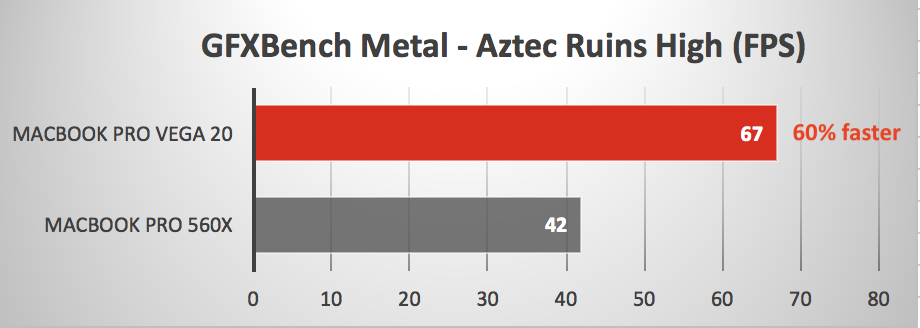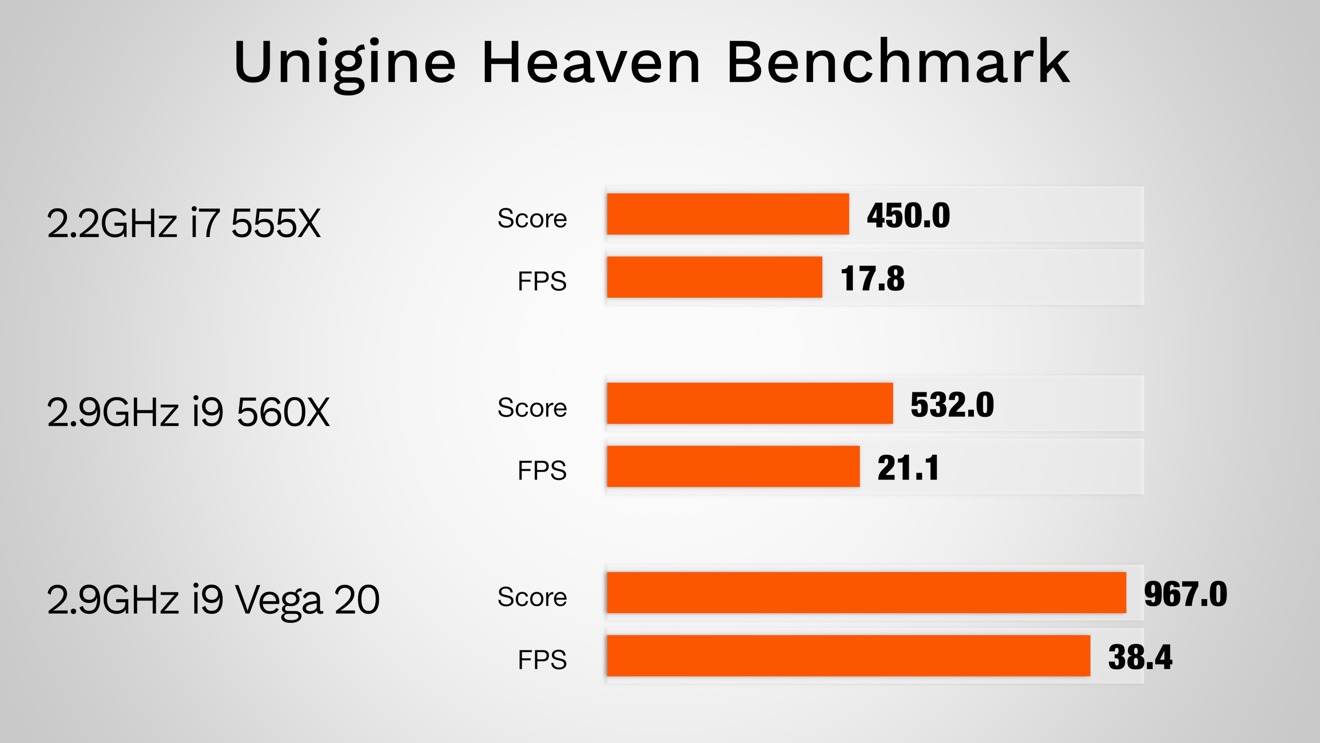
#Macbook pro vega 20 benchmarks mac
However, is it for people who do have many long cpu intensive tasks? Probably best to do those on a desktop Mac or switch to a bulkier Windows laptop that has better thermal management. I suspect that they studied the market and that most buyers don't have long cpu demanding runs. I think the reason they didn't change the chassis is that they market it as thin not because of tooling. I'm not too sure of the settings on the Mac. The results came from Dave Lee's video review: Do you know how the MBP render test was run? Was the Premiere project set to OpenGL or Metal? I understand that the Razer Blade i7 was able to take advantage of NVIDIA acceleration inside Premiere Pro. That's the only thing that tells us if a certain processor or CPU is worth the extra money.
#Macbook pro vega 20 benchmarks pro
Hi - where did you get those Premiere Pro testing results from? It definitely depends on the application, but it looks like the new 8 core i9 is giving a reasonable boost in performance over last year's 6 core i9 in real world applications: Find deals on every 2019 13" MacBook Pro in our Price Guide. This was all with the quality set to medium, tessellation and stereo 3D disabled, anti. Stay tuned for additional details as they become available. The Radeon Pro Vega retails for an additional $250 as a build-to-order option, while the Radeon Pro Vega 20 sells for an additional $350. The Radeon Pro Vega graphics cards are currently only available as a build-to-order option on the high-end 15-inch MacBook Pro model, which retails for $2,799. CPU benchmarks on Geekbench between machines using the new cards and the existing cards are similar because there have been no changes to the CPU.


Before this update, users could only get Radeon Pro 555X or 560X GPUs. The new high-end MacBook Pro, complete with a Core i9 processor, snagged a Metal score of 73953, blew out machines with similar specs and the Radeon Pro 560X graphics cards, which earned maximum OpenCL scores of right around 65000 and Metal scores of approximately 57000, suggesting much higher graphics performance with the new Radeon Pro Vega 20 card.Īt the current time, benchmarks are only available for the higher-end Radeon Pro Vega 20 card, with no data available for the Radeon Pro Vega 16 card. Customers can now get a MacBook Pro with an AMD Radeon Pro Vega 16 or Vega 20 graphics processing unit. Additional benchmarks found on Geekbench with a similar machine using an upgraded Core i9 processor demonstrated OpenCL scores of 75817, 76017, and 80002. The machine, which includes a 2.6GHz Core i7 Intel processor, a Radeon Pro Vega 20 graphics card, 16GB RAM, and a 1TB SSD, earned an OpenCL score of 72799. In short, they’re pretty impressive and help show what to expect in terms of performance improvements over 15-inch MacBook Pro models with the standard Radeon Pro 560X graphics card that was previously the highest-end option available.

Following up on last week’s story about Apple releasing 2018 model 15-inch MacBook Pro notebooks with the Radeon Pro Vega 16 and 20 graphics cards, the first bookmarks for these notebooks appear to have been leaked.


 0 kommentar(er)
0 kommentar(er)
